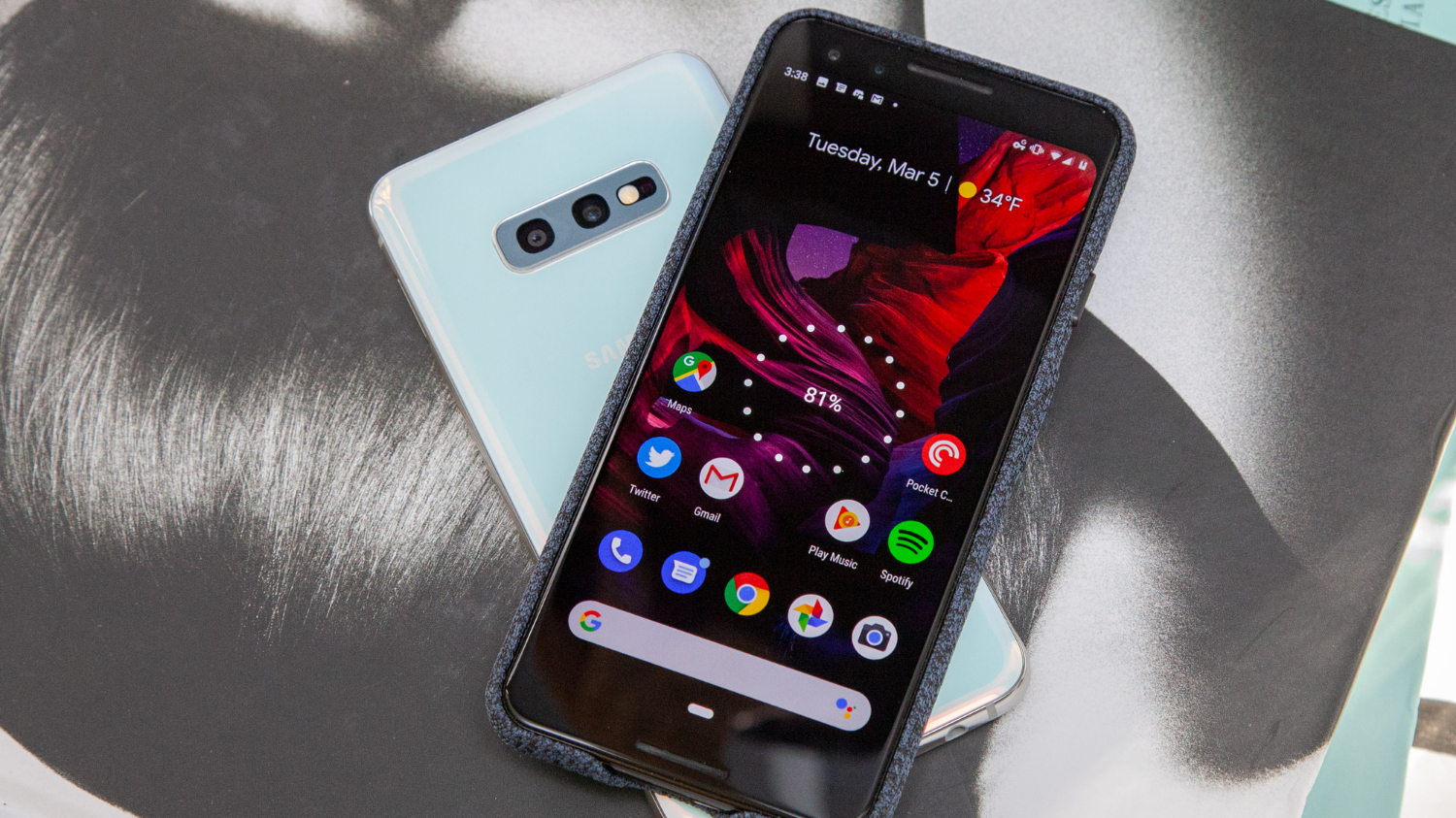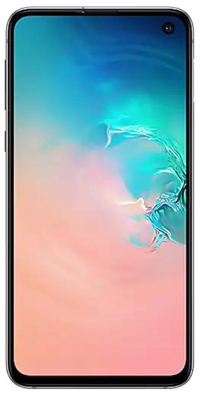Galaxy S10e vs. iPhone XR: Which Affordable Flagship Phone Wins?
The Galaxy S10e and iPhone XR both start at $749, but they are very different phones. Here's why Samsung's flagship has the edge.
Don't be fooled by their identical prices. While the Galaxy S10e and iPhone XR both start at a relatively affordable $749 and come in multiple colors, these handsets couldn't be more different in other key areas.

| Row 0 - Cell 0 | Galaxy S10e | iPhone XR |
| Price | $749; $849 | $749; $799; $899 |
| Display (Resolution) | 5.8 inches Dynamic AMOLED (2160 x 1080) | 6.1 inches Liquid Retina LCD (1792 x 828) |
| Rear Camera(s) | 16-MP ultrawide (f/2.2), 12-MP dual-pixel wide (f/1.5, f/2.4) | 12-MP wide angle (f/1.8) |
| Front Camera(s) | 10-MP dual pixel (f/1.9) | 7 MP (f/2.2) |
| CPU | Qualcomm Snapdragon 855 (North America), Exynos 9820 (international) | Apple A12 Bionic |
| RAM | 6GB, 8GB | 3GB* |
| Storage | 128GB, 256GB | 64GB, 128GB, 256GB |
| microSD | Yes, up to 512GB | None |
| Battery | 3,100 mAh | 2,942 mAh (based on teardowns) |
| Colors | Prism Black, Prism White, Prism Blue, Flamingo Pink (except U.K.), Canary Yellow (except U.S.), Prism Green (except U.S.) | Yellow, White, Coral, Black, Blue, Red |
| Size | 5.6 x 2.75 x 0.3 inches | 5.94 x 2.98 x 0.33 inches |
| Weight | 5.29 ounces | 6.84 ounces |
Design
If you're looking for a phone that you can easily use with one hand, the Galaxy S10e is a better bet. It features a relatively small (for 2019) screen of 5.8 inches, and it's more than an ounce and a half lighter than the iPhone XR (5.29 ounces versus 6.84 ounces).

The Galaxy S10 is smaller in every dimension, especially height and width, so you won't struggle to reach the other side of the screen with your thumb. Only the S10e gives you the option of a headphone jack.

At least in the U.S., the iPhone XR gives you more color options, with six hues to choose from. We're partial to Coral and Blue. The Galaxy S10e comes in four colors in the U.S., but you can get it in Canary Yellow and Prism Green in other countries.

The notch on the iPhone XR is more obtrusive than the punch hole on the Galaxy S10e, which hides its front camera, and the bezels around the screen on the iPhone XR are a bit bigger, too.
Winner: Galaxy S10e
Display
Yes, the iPhone XR's LCD screen is bigger, at 6.1 inches, than the 5.8-inch Galaxy S10e screen. But Samsung's AMOLED panel wins in other ways. For starters, OLED panels simply offer richer colors, deeper blacks and wider viewing angles than LCD panels do. The S10e's screen is also sharper, at 2160 x 1080 pixels, versus the iPhone's 1792 x 828 pixels.

To be clear, the iPhone XR's Liquid Retina display is the best LCD we've tested. When we downloaded the same wallpaper of a bridge landscape surrounded by trees, the iPhone's panel delivered a brighter image and more nuance in the stones. However, the greens in the grass and trees were more vibrant on the S10e.

In our lab results, the S10e's screen covered 148 percent of the sRGB color gamut, compared with 123.4 percent for the iPhone XR. However, the color accuracy from the iPhone's display was better, as it turned in a Delta-E rating of 0.28 versus 0.57 for the Galaxy S10e. (Zero is perfect.)
The Galaxy S10e's panel offers a peak brightness of 603 nits, while the iPhone XR's reading was 589 nits.
Winner: Galaxy S10e
Special Features and Security
While the Galaxy S10 and S10 Plus feature an ultrasonic fingerprint sensor built in to the display, the Galaxy S10e makes due with a fingerprint reader built in to the power button. And we actually prefer it; it's not as fancy, but we've found it to be faster.

The iPhone XR's Face ID is more secure because it captures a 3D scan of your face. You can also use Face ID for Apple Pay. More importantly, we very rarely experience false negatives when trying to unlock the iPhone XR with Face ID. The fingerprint sensor on the S10e can be finicky, by contrast, the phone may ask you to ensure that your finger covers the whole sensor when you're logging in.

Apple's phone doesn't have many other special features, other than Memoji, which are customizable 3D avatars you can animate with your own facial expressions. Samsung has its own version, called AR Emoji, but they're not that well-executed.

The main special features for the Galaxy S10e are its ultrawide rear camera, which can help you snap more-compelling shots, and Wireless PowerShare, for wirelessly charging other gadgets using the back of the phone. You also get fast USB-C charging out of the box and microSD expansion, features that the iPhone XR lacks.
Winner: Galaxy S10
Cameras
Right off the bat, the Galaxy S10e one-ups the iPhone XR's single rear camera by offering a second ultrawide lens on the back. With this lens, you can take in much more of the scene.
But for this face-off, I focused on several head-to-head shots, starting with a close-up photo of this cookie and brownie. Samsung's photo definitely looks more delicious, perhaps because the Galaxy S10e's scene optimizer kicked in. (I saw a little knife and fork in the upper right corner of the screen as I shot the photo.) The image is brighter; you can see more of the texture of the cookie and brownie, and the colorful M&M's pop more.
In this group portrait of Adam and Caitlin, the iPhone XR's photo wins, as it handles the sun better. The S10e's shot looks a bit washed out, and the faces have hotspots where the sun hits. The iPhone XR's shot looks more balanced, likely thanks to that phone's Smart HDR feature.
If you want good bokeh, you may be better off with the Galaxy S10e. In this photo of Caitlin, taken with the portrait mode on each phone, the iPhone XR accidentally blurred part of her jacket and hair. The S10e seemed to offer better edge detection in this case, even though I prefered the warmer look of the XR's shot.
At first glance, the iPhone XR easily wins this next round, which features an indoor photo I took of some flowers. The counter, in particular, gets lost in the S10e's shot, which came out darker. But as I zoomed in, I could make out more details in the petals and leaves on the S10e's image.
This next round — of a stone lion in front of the New York Public Library main branch — reveals subtle differences between the two cameras. The Galaxy S10e does a slightly better job with contrast, and the buildings in the background look warmer, which makes the lion pop more. However, the iPhone XR offers better detail on the lion itself (especially in the head).
The Galaxy S10e pulled ahead in low light, as demonstrated by this pic. The flowers look more colorful in the Samsung photo, and there's more noise in the iPhone XR's shot. The gold spaceship also gleams more in the S10e's image.
Lastly, I did a quick selfie comparison, and I didn't love either shot. The Galaxy S10e's photo ran a bit too hot where the sun hit my face, and the iPhone XR's image made it look like I was wearing foundation.
Winner: Galaxy S10e
Performance
The Snapdragon 855 processor and 6GB of RAM in the Galaxy S10e offer strong performance, but the iPhone XR's A12 Bionic chip is still the mobile CPU to beat.

In Geekbench 4, which measures overall performance, the S10e had a multicore score of 10,513, compared to 11,312 for the iPhone XR.
On our video-editing test, which transcodes a 4K clip to 1080p using the Adobe Clips app, the iPhone XR took only 40 seconds. The Galaxy S10e took 2 minutes and 26 seconds.
The Galaxy S10e fared better on 3DMark's Ice Storm Unlimited graphics test, notching 5,616. The iPhone XR hit just 4,416.
Winner: iPhone XR
Battery Life
On endurance, the iPhone XR destroys the Galaxy S10e. On the Tom's Guide Battery Test, which involves continuous 4G web surfing at 150 nits of screen brightness, the iPhone XR's 2,942-mAh battery lasted an excellent 11 hours and 26 minutes. The Galaxy S10e's 3,100-mAh battery lasted just 9:41.
MORE: Galaxy S10 Plus Battery Life: The New Flagship Phone Champ
In addition, the Galaxy S10e comes with a fast charger in the box. To get this feature on the iPhone XR, you need to buy a separate USB-C AC adapter and USB-C-to-Lightning cable, which is annoying. While both the iPhone XR and S10e support wireless charging, only the Galaxy S10e supports PowerShare for charging other gadgets wirelessly.
Winner: iPhone XR
Value
Both the Galaxy S10e and iPhone XR start at $749, but the Samsung gives you more storage, at 128GB, compared with 64GB on Apple's device. You can get 128GB on the iPhone XR, but you'll need to spend $799 to do so. If you want 256GB of storage, you'll pay $849 for the Galaxy S10e and $899 for the iPhone XR.
You could potentially save some money on the Galaxy S10e by using one of our Samsung discount codes.

No matter which capacity you choose, the iPhone XR is more expensive across the board. Also, note that only the S10e offers microSD expansion.
Winner: Galaxy S10e
Overall Winner: Galaxy S10e
From the design and display to the special features, cameras and value, the Galaxy S10e won the most rounds in this contest, making it the overall winner. But if you look at the final score, it's clear that the iPhone XR is a stellar phone as well. In fact, Apple's handset is better on battery life and overall performance.
So, it really comes down to what you want most from your next phone. I say get the S10e if you want a more compact design and simply more phone for your money. Opt for the iPhone XR if you prefer a bigger screen and longer endurance.
| Row 0 - Cell 0 | Galaxy S10e | iPhone XR |
| Design (10) | 9 | 8 |
| Display (15) | 14 | 12 |
| Special Features and Security (10) | 9 | 7 |
| Cameras (20) | 18 | 17 |
| Performance (15) | 13 | 15 |
| Battery Life (20) | 15 | 19 |
| Value (10) | 9 | 7 |
| Total Score (100) | 88 | 86 |
Credit: Tom's Guide
Sign up to get the BEST of Tom's Guide direct to your inbox.
Get instant access to breaking news, the hottest reviews, great deals and helpful tips.
Mark Spoonauer is the global editor in chief of Tom's Guide and has covered technology for over 20 years. In addition to overseeing the direction of Tom's Guide, Mark specializes in covering all things mobile, having reviewed dozens of smartphones and other gadgets. He has spoken at key industry events and appears regularly on TV to discuss the latest trends, including Cheddar, Fox Business and other outlets. Mark was previously editor in chief of Laptop Mag, and his work has appeared in Wired, Popular Science and Inc. Follow him on Twitter at @mspoonauer.


